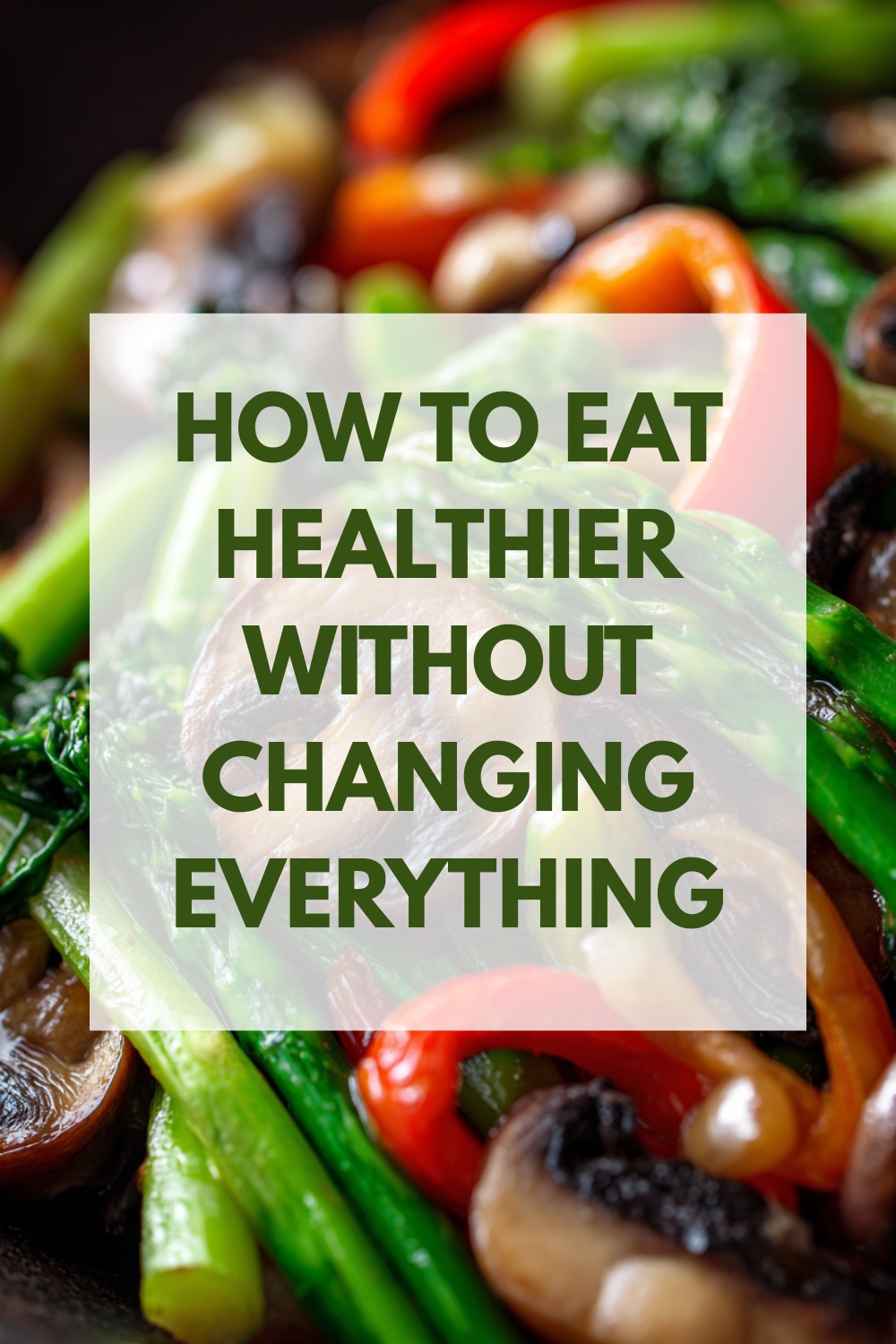When people decide to eat healthier, they often go all in.
Cut out sugar. Start meal prepping. Try new recipes. Clear out the pantry. Track everything.
That might work for a few days. Maybe even a couple of weeks.
But eventually, it gets exhausting.
And when life gets busy, it all falls apart.
Here’s the truth:
You don’t need to change everything to make progress.
You don’t need a perfect plan. You don’t need to eat clean 100 percent of the time.
You just need to start small – and build from there.
All-or-Nothing Thinking Makes It Harder
Most people get stuck because they think healthy eating has to be an all-or-nothing thing.
Either you’re eating perfectly, or you’ve failed.
So if you slip up, the instinct is to give up completely and “start over Monday.”
That cycle repeats over and over.
The goal isn’t to be perfect. It’s to be consistent enough that your habits start working for you.
Small Changes Work Better
Here’s why small changes win long term:
- They’re easier to start
- They’re easier to stick with
- They don’t rely on motivation
- They build trust in yourself
Big plans feel exciting, but they usually fall apart when life gets messy.
Small changes keep going.
Pick One Area to Focus On
Instead of trying to change five things at once, pick one place to start.
Here are a few ideas:
- Add one vegetable to your day. Doesn’t matter which meal. Just one.
- Eat a real breakfast. Something with protein, not just coffee and toast.
- Make one snack a bit more nourishing. Try fruit with peanut butter or yogurt instead of chips.
- Build meals around protein, fiber, and fat. That combo keeps you full and steady.
- Don’t go more than 5 hours without eating. Waiting too long leads to chaos eating.
Choose the one that feels easiest or most relevant to your day. Not the one you “should” do. The one you can do.

Stick With It Until It Feels Normal
This part matters.
A habit only works if you keep doing it.
So don’t rush to add the next thing. Stick with your one change until it starts feeling automatic.
Once it’s part of your routine, then think about adding something else.
It’s not sexy or exciting, but it works.
Make Healthy Eating Easier, Not Harder
You don’t need fancy ingredients or hours of prep.
In fact, trying to do too much usually backfires.
Here are a few ways to keep it simple:
- Repeat meals you already like
- Use convenience foods like frozen veg, canned beans, or rotisserie chicken
- Keep go-to meals in your rotation (like eggs and toast, a basic stir-fry, or a wrap)
- Keep snacks in your bag or car so you don’t get stuck hungry
The goal is to reduce friction, not add more.
Don’t Wait for Motivation
Motivation comes and goes.
If you rely on being motivated, your habits will fall apart the second your day gets stressful or you feel tired.
Build systems that help you follow through even when you don’t feel like it.
That might mean:
- Having a frozen backup meal in the freezer
- Prepping one or two things on Sunday
- Packing a snack in your bag before you leave the house
- Writing down your go-to grocery list so you’re not guessing at the store
Simple steps. Low effort. Big return.
Track Progress by Repetition, Not Perfection
Instead of asking “Did I eat perfectly today?”, try asking:
- Did I practice my habit today?
- Did I follow through at least once, even if the rest of the day was messy?
- Am I doing this more often than I used to?
If the answer is yes, you’re moving forward.
Let yourself notice that progress.
Real Progress Feels Boring Sometimes
That’s okay.
Eating a vegetable every day isn’t dramatic.
Eating breakfast regularly doesn’t get likes on social media.
But those little things add up.
Over time, they change how you feel, how you eat, and how much effort it takes to stay on track.
That’s the goal.
Final Thoughts
You don’t need to change your whole life to eat healthier.
You just need one small shift that you can stick with.
Start with that.
Don’t rush. Don’t overcomplicate. Let it be enough.
And when it feels like part of your routine, add the next thing.
This is how you build real habits that last.
One step at a time. No all-or-nothing needed.

